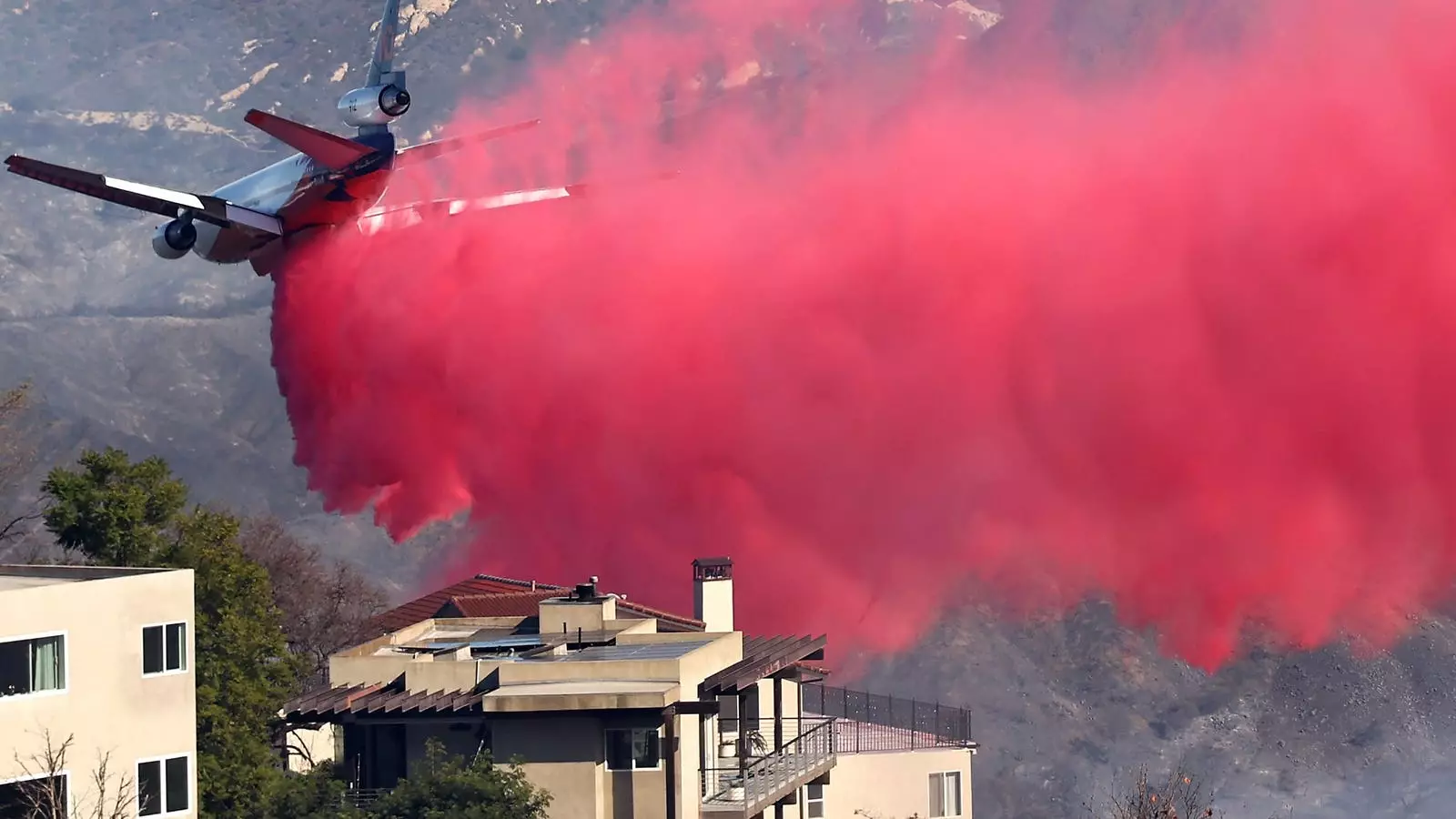As wildfires blaze through various regions, such as the ongoing infernos in the Los Angeles Area, a looming yet often overlooked danger emerges: the contamination of food intended for human consumption. The U.S. Department of Agriculture (USDA) has recently warned that smoke and ash produced by wildfires can compromise the safety of food products in households far beyond the immediate vicinity of the flames. Smoke plumes can ascend to stunning altitudes of 14 miles (roughly 23 kilometers), leading to the dispersal of harmful particulates that may impact communities located hundreds, if not thousands, of miles away from the fire.
These devastating wildfires are exacerbated by a combination of dry vegetation and fierce Santa Ana winds, which create the perfect storm for rapid wildfire spread. On January 7th, a series of infernos erupted in Los Angeles, consuming tens of thousands of acres of land and earning a grim place in California’s historical context as one of the state’s most destructive wildfire seasons. The Los Angeles County Sheriff, Robert Luna, analogized the destruction to that of an atomic bomb, portraying the immediate danger that such wildfires pose not only to property but to public health as well.
Foodborne illnesses are primarily caused by the ingestion of food contaminated with harmful pathogens, including bacteria and viruses that can proliferate in unsafe environments. Wildfire smoke introduces an alarming range of harmful substances, which can contaminate food as well as surrounding air quality. As Mark Davidson, a representative from Camfil, highlights, the impact of these smoke particulates is not localized to fire-affected areas; winds can carry toxins far and wide, thereby expanding the scope of the problem.
Numerous studies have shown that wildfire smoke poses an elevated risk due to its unique composition. Unlike conventional air pollution, wildfire smoke often contains toxins from burning organic materials as well as synthetic substances, such as plastics and treated wood. Alarmingly, fine particulate matter from wildfires can reach levels 8 to 20 times greater than those recommended as safe by the World Health Organization, rendering the air hazardous.
Fine particulate matter, particularly PM2.5, is of particular concern. Not only do these ultra-fine particles penetrate deeply into the lungs, but they can also find their way into food packaging materials such as cardboard boxes and plastic wraps. Once contaminated, food cannot simply be cleaned; the hazards of wildfire smoke make it imperative to recognize the limitations of decontamination efforts.
The Los Angeles Department of Public Health has issued urgent recommendations for residents affected by wildfire smoke. They advocate for the disposal of food and water that has been exposed to ash or smoke. Plastic water bottles should be discarded, and any food kept in non-airtight containers should also be thrown away. Conversely, sealed glass or metal jars can often be effectively cleaned, lowering the risk of contamination.
The chemicals released during wildfires pose an additional danger to food safety. Common contaminants include nitrogen oxides and polycyclic aromatic hydrocarbons (PAHs), both of which can infiltrate indoor spaces through ventilation systems, compromising the safety of food stored inside. Experts recommend utilizing carbon filtration technologies and high-efficiency air filters to minimize these risks.
Moreover, fires ignite a complex chemical reaction that can alter existing compounds in foods, making it crucial to recognize the danger that wildfires pose not just to fresh produce, but also to preserved food products. The intense heat generated by the flames can rupture seals on food containers, exposing contents to the kinds of contaminants that normal washing won’t eliminate.
The ongoing fires in Los Angeles have disrupted the lives of hundreds of thousands of residents, with close to 200,000 people displaced due to fire and power outages. The fear of foodborne illness is particularly acute for those whose homes have been affected, especially given the volatile conditions leading to widespread food spoilage. Experts warn that, in cases of spoilage, it may be more prudent to discard not just food items but potentially contaminated appliances like refrigerators, underscoring the pervasive nature of these risks.
The crisis faced by affected families highlights the critical need for robust disaster preparedness and public education regarding food safety during wildfires. As climate-related disasters become increasingly common, it is essential to take action that encompasses both immediate responses to wildfires as well as long-term strategies aimed at safeguarding public health and food systems.
The connection between wildfires and food safety is not merely a peripheral concern; it is a pressing issue that demands comprehensive and immediate strategies for community preparedness and resilience. Only through awareness and proactive measures can we mitigate the dire consequences of these environmental disasters on our food supply and public health.


Leave a Reply